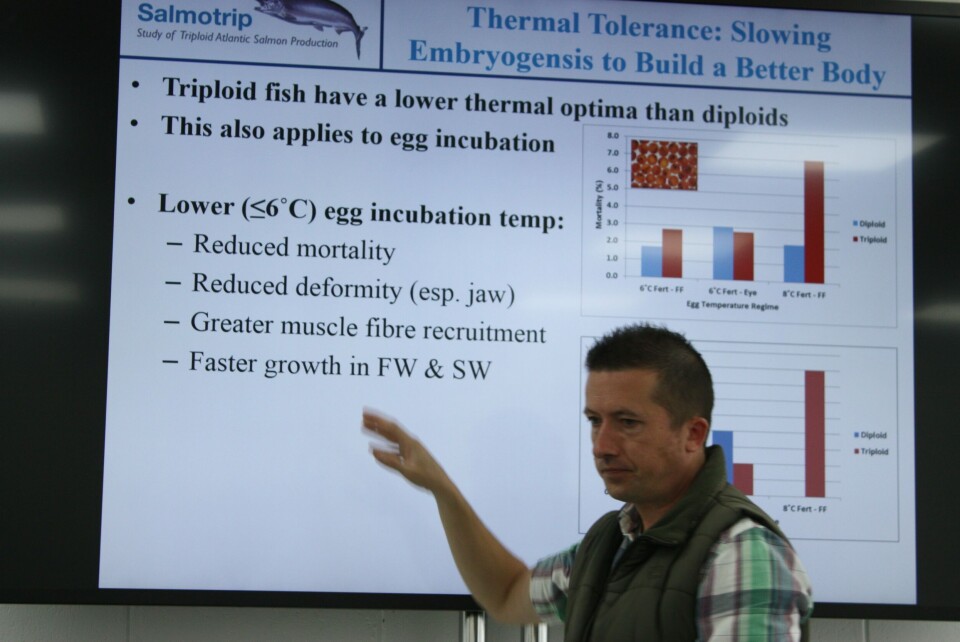
Trips reveal true potential
A recent commercial scale trial has shown that triploid salmon can reach market size seven weeks before their diploid equivalents.
Run by Biomar in Norway, the trial showed that, during the grow-out phase, triploids were putting on an additional kilo in weight compared to the diploids, or could have been harvested out seven weeks prior to the diploids.
Meanwhile the mortality rates were comparable and, at processing, 93% of triploids (vs 97% of diploids) were classified as superior – showing that old concerns about deformities and poor disease-resistance are now outdated.
Scottish interest
These impressive results have added significant momentum to plans to increase the stocking of triploids in other countries too.
Indeed, as Dr John Taylor, from Stirling’s Institute of Aquaculture (and a key player in the international Salmotrip research project) tells Fish Farming Expert, the time has finally come to begin large scale commercial production of triploid Atlantic salmon in Scotland.
“There is still a hangover in the industry from the early days of triploid production. However, prior to the start of the Salmotrip project, most of the problems occurred when researchers and farmers were treating triploids as diploids,” he says.
“Such an approach made it difficult to show the benefits of triploidy, but now, eight years into the Salmotrip project, we feel completely comfortable that we have positive news to pass on – not least the fact that they can grow like hellfire,” he adds.
The reason behind this impressive growth rate is, according to Dr Taylor, relatively straightforward.
“Triploids have three copies of every gene – two from their mothers and one from their fathers – which essentially gives them the genetic marker of a bodybuilder, but we need to supply them with the right nutrients to grow,” he explains.
“The right diets plus incubating the eggs at low temperatures combine to unlock the growth potential of triploids and we’re consistently getting larger smolts, with triploids outperforming diploids by up to 30% in terms of growth rates.
“The [Norwegian trial] will provide a benchmark for what we hope to achieve in Scotland in a current commercial trial with Marine Harvest, which is taking place in two pens on two different sites, containing up to 500,000 triploids in total, with the potential to upscale next year,” he reveals.



















































